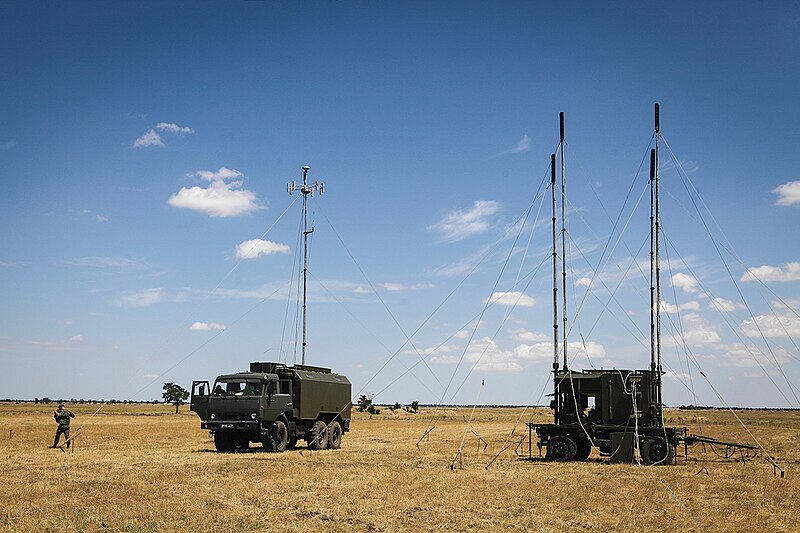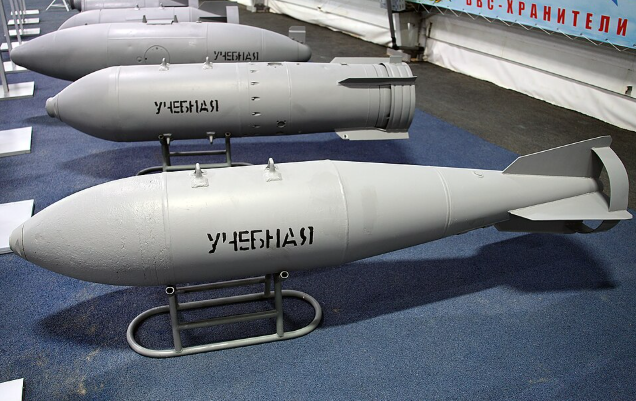
Moscow’s version of the attack around Kramatorsk that killed over 600 Ukrainian soldiers was no ordinary artillery assault but a choreographed display of Russia’s maturing combined employment of aerial bombs, barrier munitions, ballistic missile attacks, and electronic warfare. The employment of FAB-500 glide bombs, Geran drones, and Iskander tactical missiles highlights how Russian forces are exploiting stand-off precision and layered attack profiles to overwhelm Ukrainian defenses.

1. The FAB-500: From Iron Bomb to Stand-Off Weapon
Originally a 1954-introduced free-fall “iron” bomb, the FAB-500 was transformed into a pop-out winged satellite-guided munition with a range extending to approximately 70 kilometers. This variant keeps launch platforms like Su-35s out of the Ukraine Patriot SAM engagement envelope. Ukrainian analyst Alexander Kovalenko has written that this kind of munition allows Russia “without entering the zone of our air defence systems, both the Ukrainian armed forces and cities.” The FAB-500’s 500-kilogram class warhead is very effective at wiping out hard targets, and at a much lower cost than the cruise missile, it’s perfect for saturation attacks.

2. Geran Drones: Persistent, Adaptive, and Hard to Stop
Gerans, which have Iranian Shahed roots, have also been the workhorse of Russia’s long-range harassment. Versions now even have radar-absorbing paints, thermobaric warheads, and even AI-assisted targeting systems. July’s operational tempo averaged 201 drones per day, with some bundles combining strike and decoy types to overwhelm Ukrainian missile defenses. At an estimated cost per unit of $10,000–$50,000, they cost much less than the missiles Ukraine has to expend to shoot them down. Gerans’ purpose in the Kramatorsk attack was likely to blunt local missile defenses and ISR assets before the arrival of higher-cost munitions.

3. Iskander Tactical Missile System: Pinpoint Accuracy at 500 Kilometers
The 9K720 Iskander-M short-range ballistic missile can deliver a 480–700 kg payload with a circular error probable as low as 10–20 meters when equipped with an optical seeker. Its depressed trajectory and ability to maneuver at up to 30g complicate interception. Mounted on the MZKT-7930 8×8 transporter-erector-launcher, the system can fire ballistic or cruise missiles, operate independently, and redeploy quickly. In Kramatorsk, Iskanders would have been tasked with destroying high-value, time-sensitive targets such as command posts and electronic warfare stations.

4. Target Set: More Than Troops
Russian sources cataloged the destruction of four multiple-launch rocket systems, three tanks, seven patrol and reconnaissance vehicles, 22 infantry fighting vehicles, and 20 trucks. In addition, four electronic warfare stations, an ammunition facility, a command post, and ten personel shelters were struck. The listing of EW stations in the target profile implies an intentional attempt to mute Ukrainian situational awareness in preparation for subsequent operations.

5. Electronic Warfare as a Force Multiplier
Russian EW systems such as the RB-341V Leer-3, R-330Zh Zhitel, and Krasukha-series systems have been used extensively to jam GPS, break communications, and disable drone control links. In past campaigns, these systems have overridden civilian and military navigation signals, even at times disabling encrypted M-Code GPS. By synchronizing EW with the kinetic attack, Russia increases the likelihood that guided munitions and UAVs will reach targets unfazed.

6. Coordinated Strike Sequencing
It probably entailed a layered sequence: Geran drones to saturate and distract air defenses, EW to disrupt response coordination, FAB-500 glide bombs to knock out fixed defense positions, and Iskander missiles to take out hardened or mobile high-value targets. This resembles Russian doctrine of combining stand-off fires with electronic attack to create localized overmatch.

7. Industrial and Tactical Sustainability
Russia’s power to repeatedly launch such mass strike packages relies on its industrial base. The FAB-500 and Geran are comparatively cheap to mass-produce, and Iskander brigades are being increased from 12 to 16 launchers each. This level of production depth enables repeated mass strikes without draining off strategic missile stores, a decisive point in a long war of attrition.

8. Implications for Ukrainian Defense
To offset this array of threats in the Ukrainian case, it requires layered air defense systems, real-time EW counter-countermeasures, and dispersion of critical assets. Ukrainian Air Force spokesman Yuri Ihnat has appropriately warned that “Their goal is not only to hit our frontline positions, but guided glide bombs are also flying further behind our defenders to hit rear command posts, rear supplies, ammunition, and so on.” In the case of insufficient long-range interceptors, Ukraine’s ability to blunt such multi-domain missile attacks is still limited.

It also illustrates both the lethality of modern combined-arms fires by the Russian army and the increased complexity with which stand-off munition, drone, and EW systems are being incorporated into a single operational rhythm. It’s a defense analyst’s teachable moment on how industrial production, ammunition diversity, and EM superiority can converge to characterize the battlefield at distances remote from the forward line.

